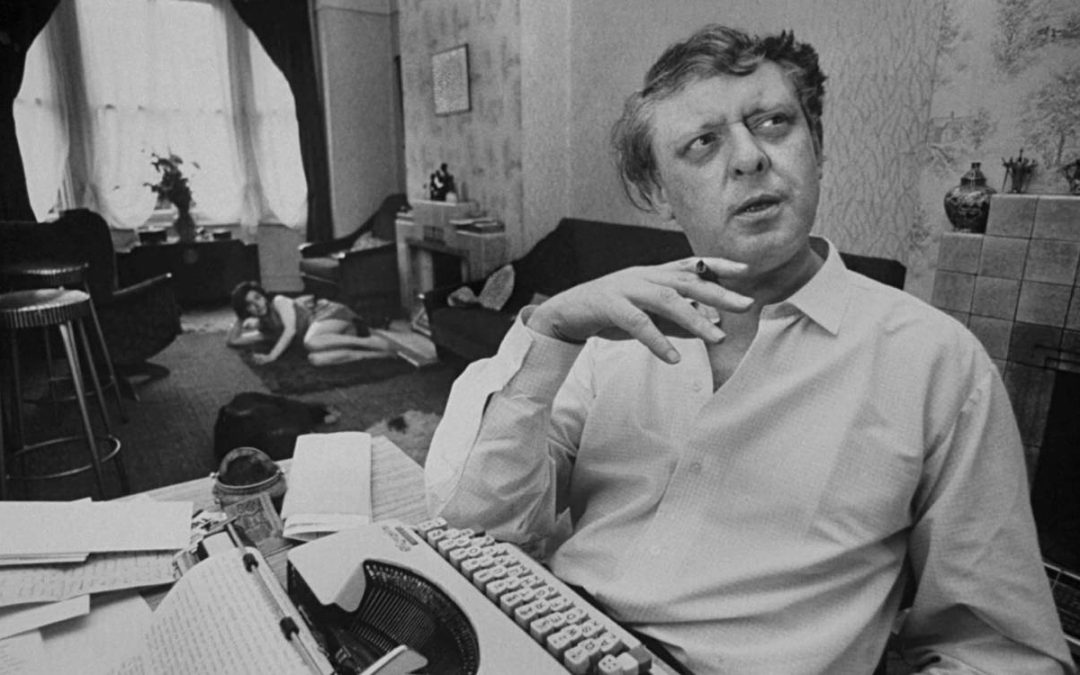“Someday I hope you get the chance to live like you were dying.” Tim McGraw
1959 – Kuala Kangsar, Malaysia: The headaches and fatigue had persisted for several months. Anthony Burgess dismissed it as a mysterious tropical illness, but he finally agreed to his wife’s request to see a doctor. Now, the 42-year-old English teacher sat stunned. A fatal brain tumor and less than a year to live were all he remembered the doctor saying.
Burgess was born in Manchester, England, in 1917. He grew up in bars and dance halls where his mother was a singer and dancer, while his father played the piano, sang, and sold encyclopedias in his day job. Burgess taught himself to play the piano and composed his first musical at age 18. He showed a passion for music and English that would shape his life.
After graduating with an English degree from the University of Manchester in 1940, Burgess taught English in high school. He married Lynne Jones in 1942 while serving as a teacher in the Royal British Army Educational Corps in Southeast Asia.
In 1954, the Burgesses moved to Kuala Kangsar, Malaysia, where Anthony worked for the British Colonial Service, teaching English at Malay College. Two years later, he published his first novel, Time for a Tiger. In late 1959, after experiencing severe headaches, Burgess collapsed in his classroom and agreed to see a doctor.
A few months after the brain tumor diagnosis, the British Colonial Service discharged Burgess. He and Lynne were flown back to England to settle their affairs. Burgess worried about dying, but mostly he worried about Lynne. She had faithfully followed him to one of the most remote parts of the world. What would she do after his death? They had scraped by on his teaching salary and the small revenue from his book sales. There was no retirement, no rainy-day fund to help her weather this storm.
To provide for Lynne, Burgess decided to do the only thing he knew how to do: write a book. He plunged himself into his writing and wrote feverishly, hoping to create royalties for his soon-to-be widow. In 1960, the year in which he was supposed to die, Burgess published five novels. By the end of the year, his headaches and dizziness were gone. It was apparent he was not dying.
By the end of 1962, Burgess had published seven novels, including Earthly Powers, which received international acclaim, and A Clockwork Orange, which catapulted him to international fame. The book was made into an award-winning movie a decade later. Fearing Burgess’ readers might associate his prolific output of books with mediocre quality, his publisher insisted that he publish under several pen names, including Joseph Kell.
While continuing to churn out novels, Burgess began a career as a literary journalist, frequently contributing to magazines, television, and radio programs. He received television credits for the movies Moses the Lawgiver and Jesus of Nazareth. After a long illness, Lynne died of liver failure in March 1968. He had been her faithful caregiver for the duration of her illness.
Burgess later remarried and moved to Monaco. During his career, he was a novelist, journalist, poet, screenwriter, broadcaster, and musical composer. He wrote 33 novels, 25 nonfiction books, a two-volume autobiography, and more than 250 musical works, many of which were for Broadway. A Clockwork Orange frequently appears on lists of the 100 best books of all time.
A brain tumor diagnosis fueled Anthony Burgess’s incredible writing success for many years. He left a literary legacy and sufficient royalties for several wives, including homes in London, Cambridge, Rome, and Monaco. In his seventies, Burgess worked daily from 10 a.m. to 5 p.m., writing 1000 words a day. In 1993, although dying from lung cancer, he continued to write and compose music. He completed St. John’s Sonata on November 12 of that year. He died 10 days later in London at age 76, more than 34 years after his brain tumor diagnosis.

Love the story. The good Lord wanted him to stick around a while longer. Thank you Pete.